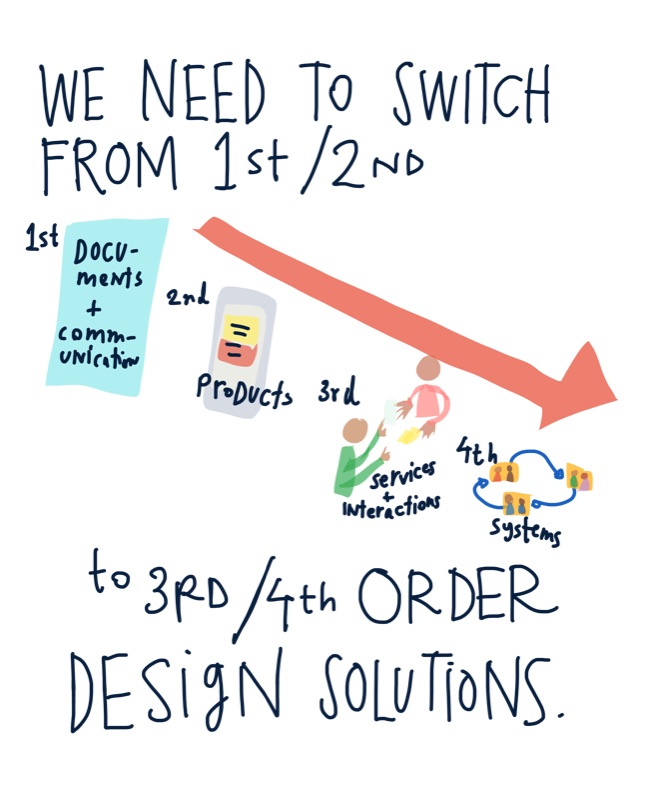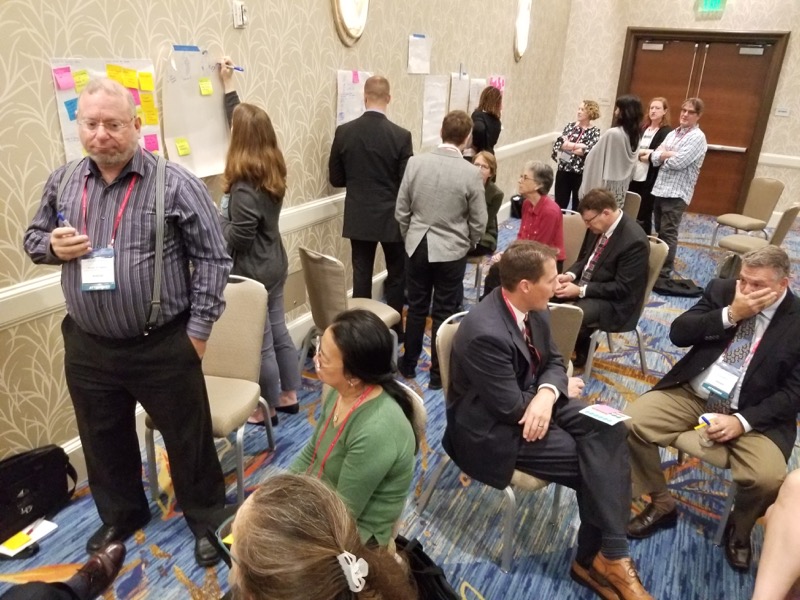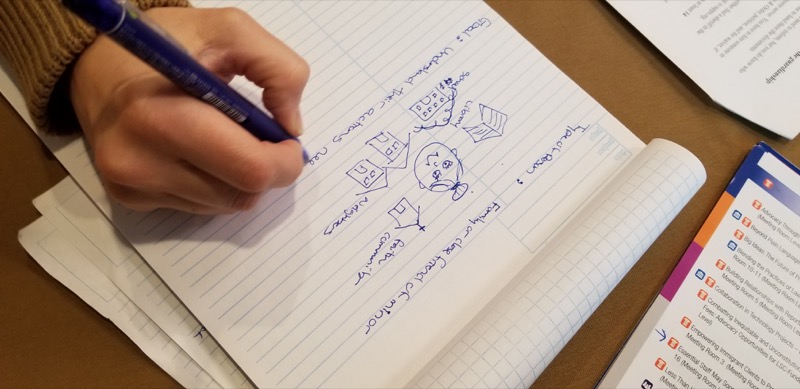Last week, Stanford Legal Design Lab held its first Law + Design Summit, to bring together all kinds of legal people who are interested in changing the legal system. We had attendees from the courts, law schools, law firms, legal departments, research groups, and beyond. Also there were designers, product managers, and engineers, who are not law-specialists, but who care about civic improvement.
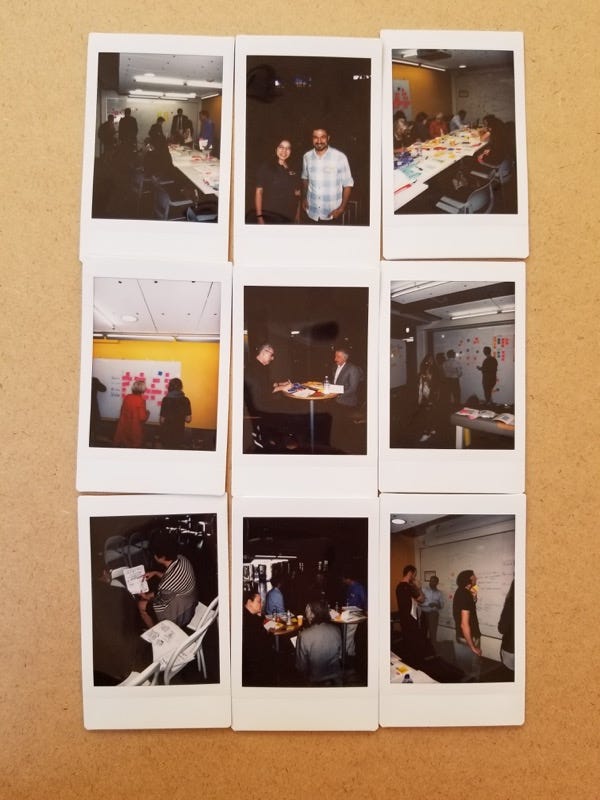
We will be uploading videos of the talks and panels in the coming week. In the meantime, I synthesized the main takeaways that emerged out of the day’s talks and work. Some of them came straight from our speakers, others from the participants after they went through the workshop.
1. Our hair is on fire, so it’s time to start designing and thinking
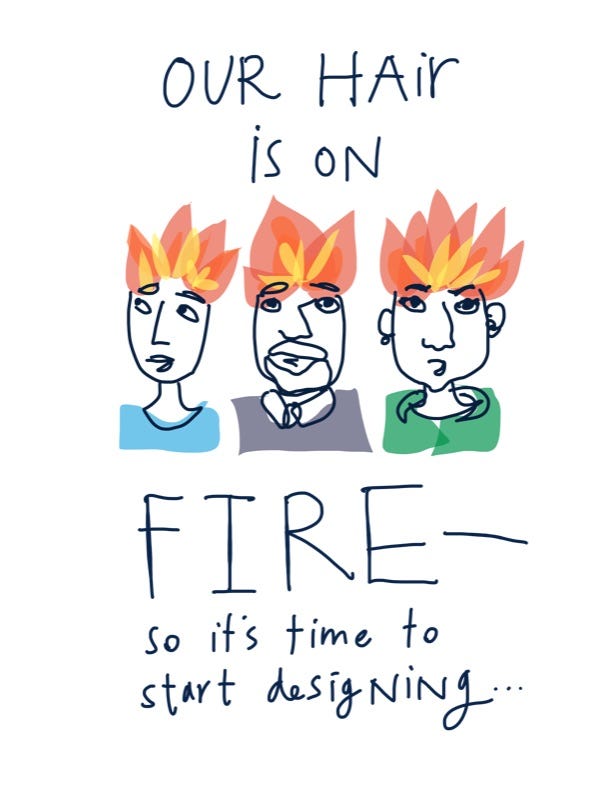
(To paraphrase Winston Churchill, speaker Shantelle Argyle, and guest Richard Schauffler).
We in the law are in the middle of a huge crisis, whether we feel it or not. Our ‘user base’ for courts and legal services is on the precipice of a radical decline — while our courts are overburdened with litigants without lawyers. Even if our budgets are limited, or our short-term prospects are fine — we need to be moving at a radically quick new pace to build a better legal system.
Particularly, as Jose Fernando Torres called out, we cannot have our legal innovation work be focused on committees, reports, and boardroom discussions. We need to be on a structured path of experimentation — rather than talking to experts, we need to find small, willing jurisdictions who are willing to try new ways of delivering service and structuring legal rules. We can learn more from well-planned, user-centered experiments than roundtables and write-ups with very smart people.
2. Imagination is the key to design, and it’s what’s missing with so much of law school and law practice.
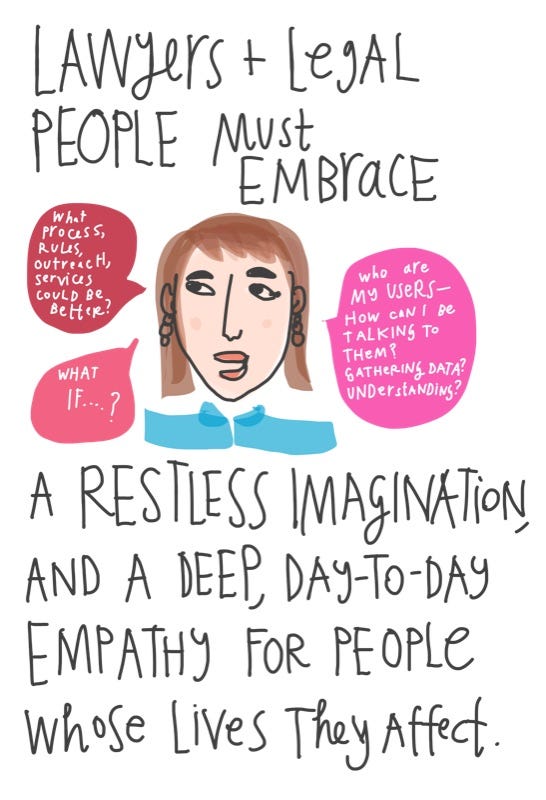
As law professor Jay Mitchell and design/management professor Richard Buchanan both discussed, the key to being a good designer is having an open imagination: what could be different? What could be better? What if we completely reimagined what’s possible in the legal system?
Being a legal designer is not about being able to make beautiful drawings or powerful tech. We in law schools are not encouraging this restless imagination enough.
3. Legal orgs need to empower their people to be scrappy and quick, amateur designers.
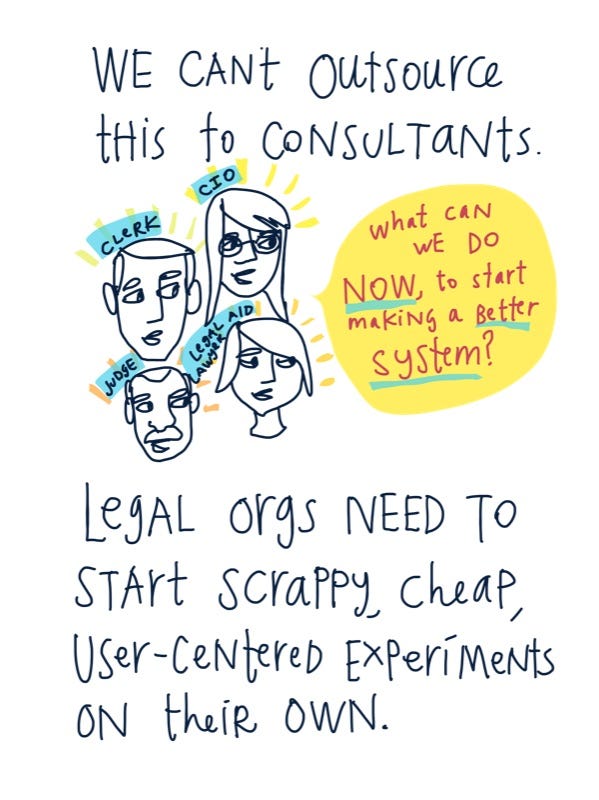
Don’t think that design consultants are your answer to making your work more human-centered or to get to better ways of doing things. Be suspicious of people trying to sell you packaged “Innovation”. There is some use in learning the fundamental mindsets and processes of innovation work, but not in following strict recipes — or in relying on outsiders to do the work for you.
Instead, the key to change lies in your own organization. Who within your firm, court, department, or school is open to work with you on prototyping new ways of doing things? Find them, work with them, and slowly build out experiments, that can turn into pilots, that can turn into full-blown programs. Don’t wait for a huge grant to be able to hire consultants to be able to do this work.
4. Be careful of tech-first innovation.
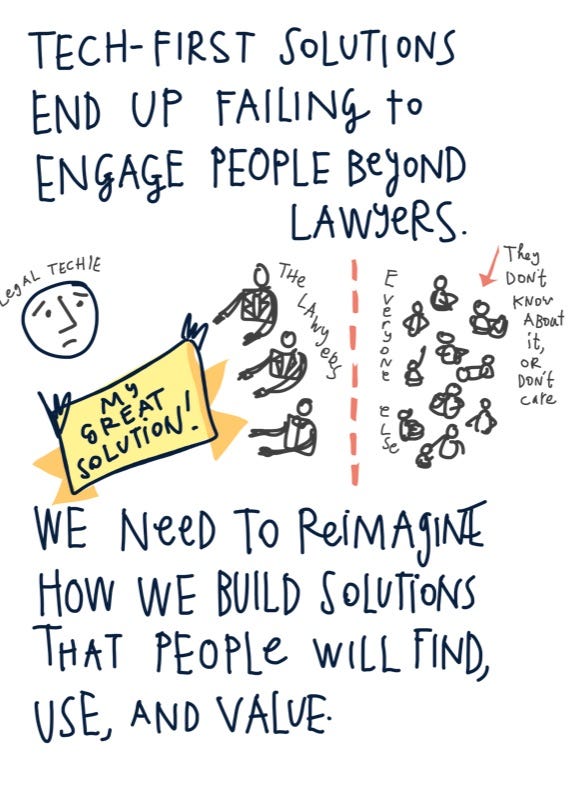
So much of the projects that are being built, including those by some of our spotlights speakers, are made with the best intentions and end-users in mind, but end-users aren’t finding and connecting to them. It’s lawyers who are using them. Lawyers aren’t very good at getting non-lawyers to use their stuff. The trend we noticed among our speakers and participants is that if you just build cool tech, you might get some lawyers in your circles to use it and love it — -but you won’t get wider adoption among lay people.
We in law need to invest in testing out different outreach and community-embedding strategies, to get our great new solutions to the people who most need them. Our design work has to focus on engagement of non-lawyers. Where can we reach them, how do we support them, how do we understand them better? Because our work so far isn’t getting there.
5. We need to get to 4th order type of work.
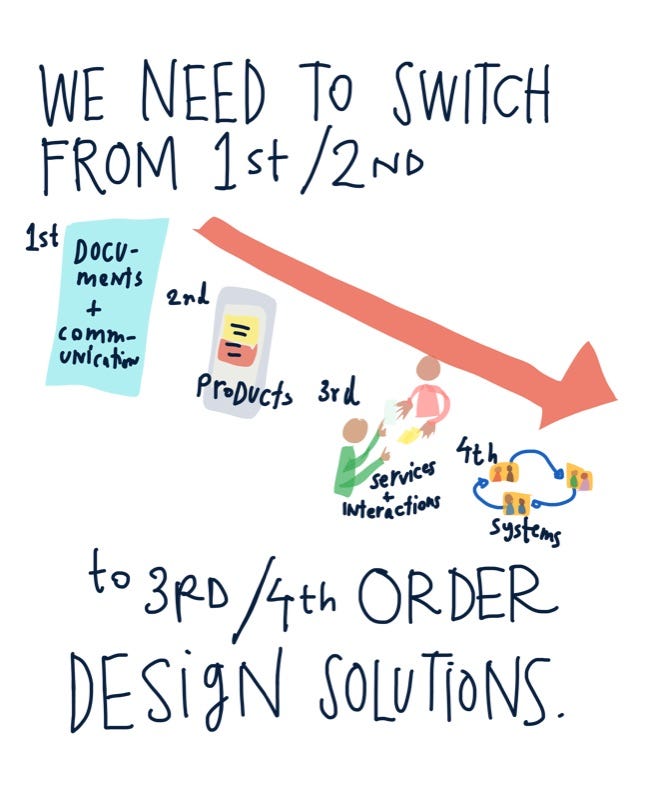
Professor Richard Buchanan, in his keynote, challenged the legal innovation community to raise its game. Don’t just focus on making documents more usable, or services have a better experience. Think in systems-levels, to get to more meaningful solutions. (Read more about Prof. Buchanan’s Four Orders of Design framework here, in Design Issues).
Which means seeing everything around us, including the possibilities, as a possible system. Instead of thinking of legal documents just as products that we can improve the interfaces of, we need to be thinking of them in their systemic role, and then taking systems-level solutions to improving them. That means moving away from more ‘surface level’ design, but really getting to the core of changing the rules, the processes, and the way the system works. Not just putting better patches on top of a rotten system.
Professor Gillian Hadfield’s proposal for new legal rules and systems leads the way in this higher-level of design work.
We will be putting videos online, so you can see the talks and discussions for yourself. And you can see the Summit in images, here at our site. Thanks to all our speakers and attendees!
